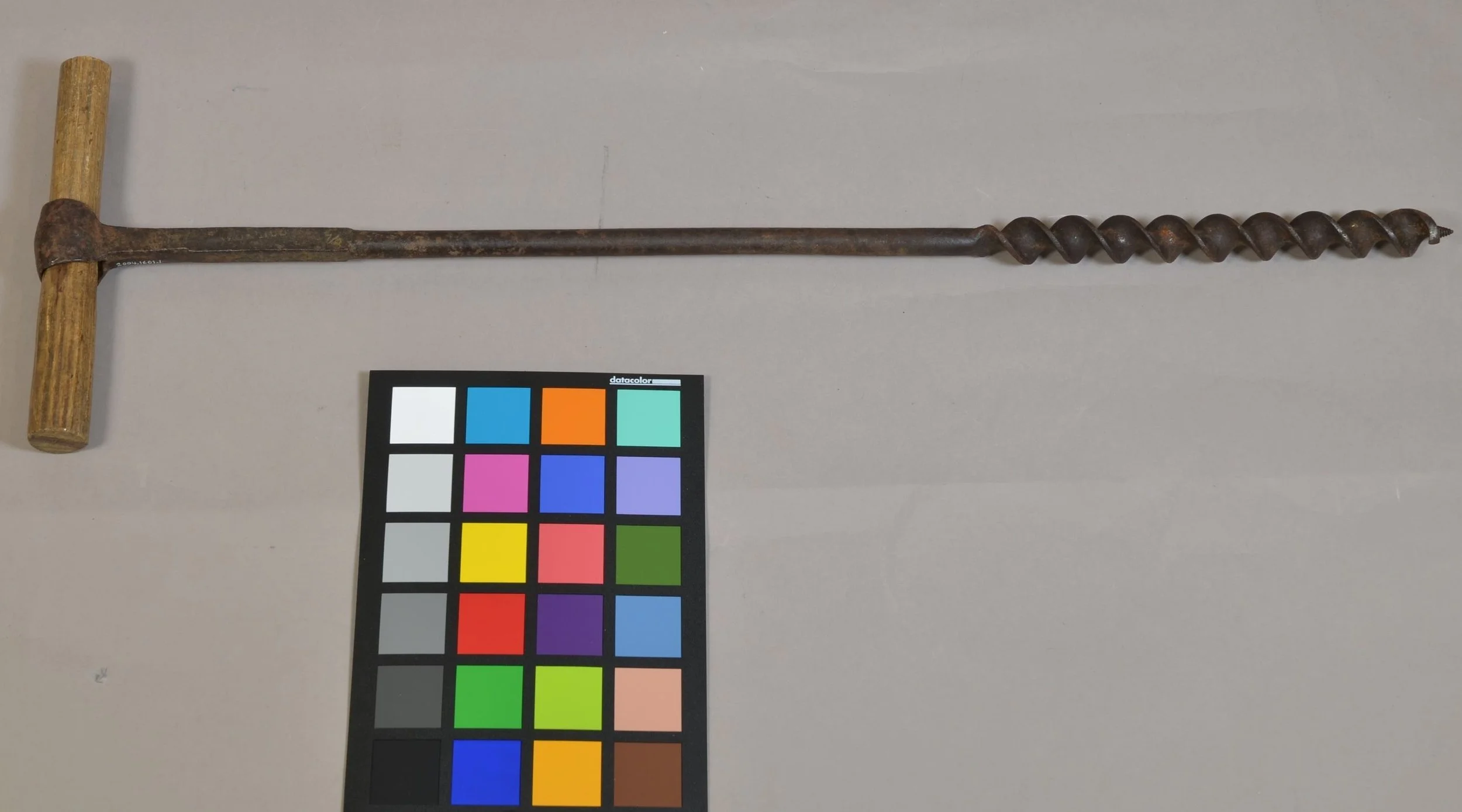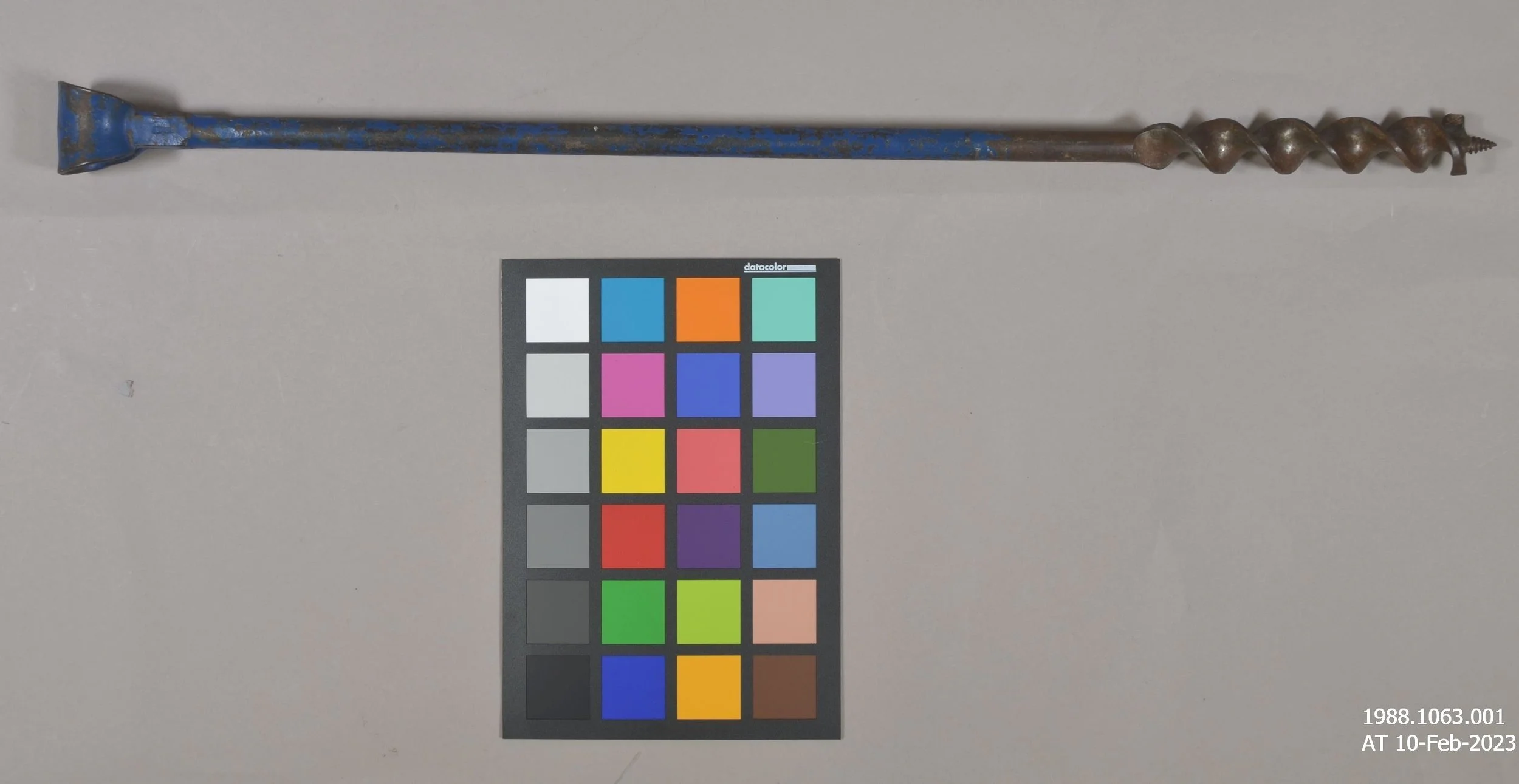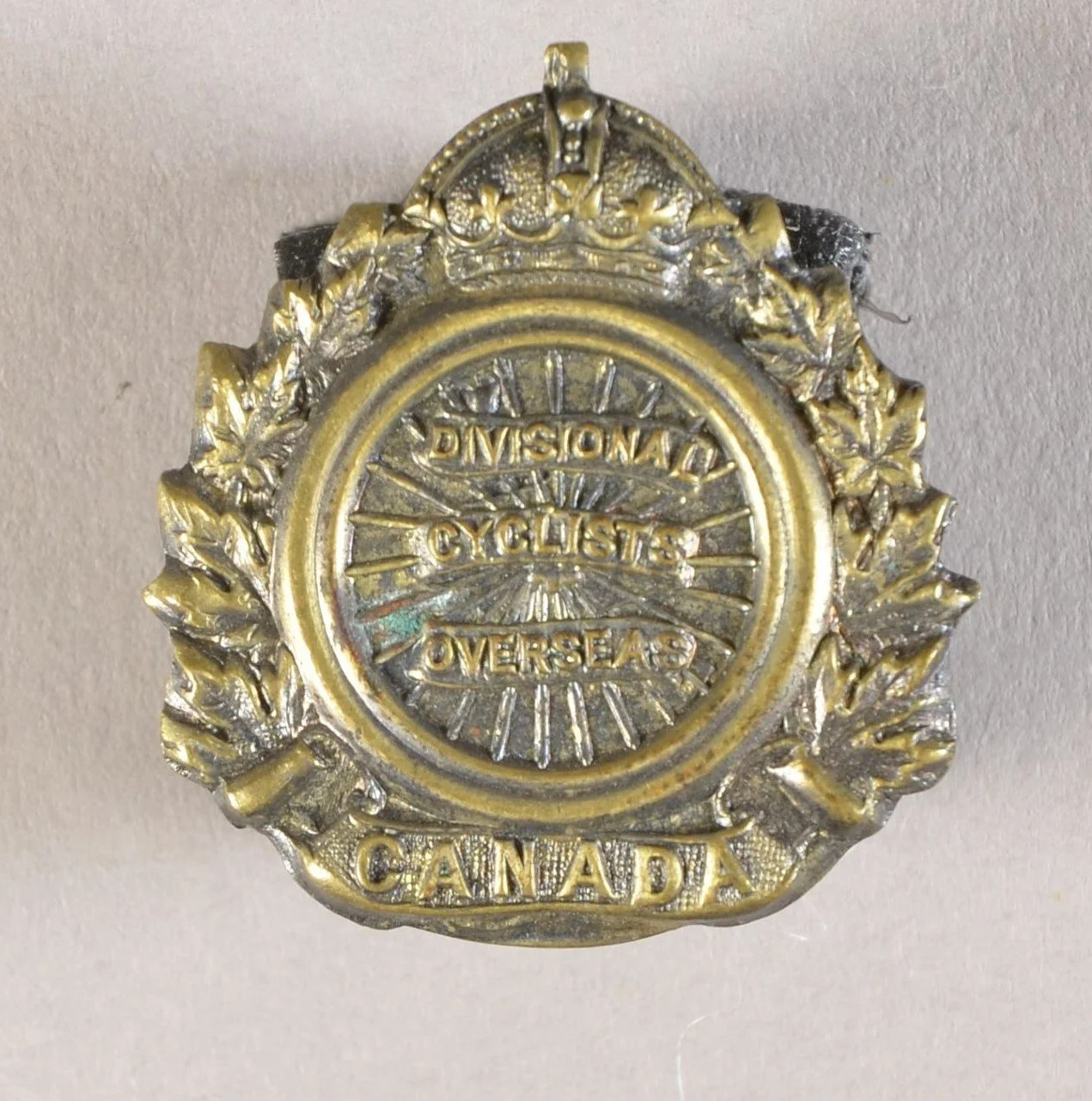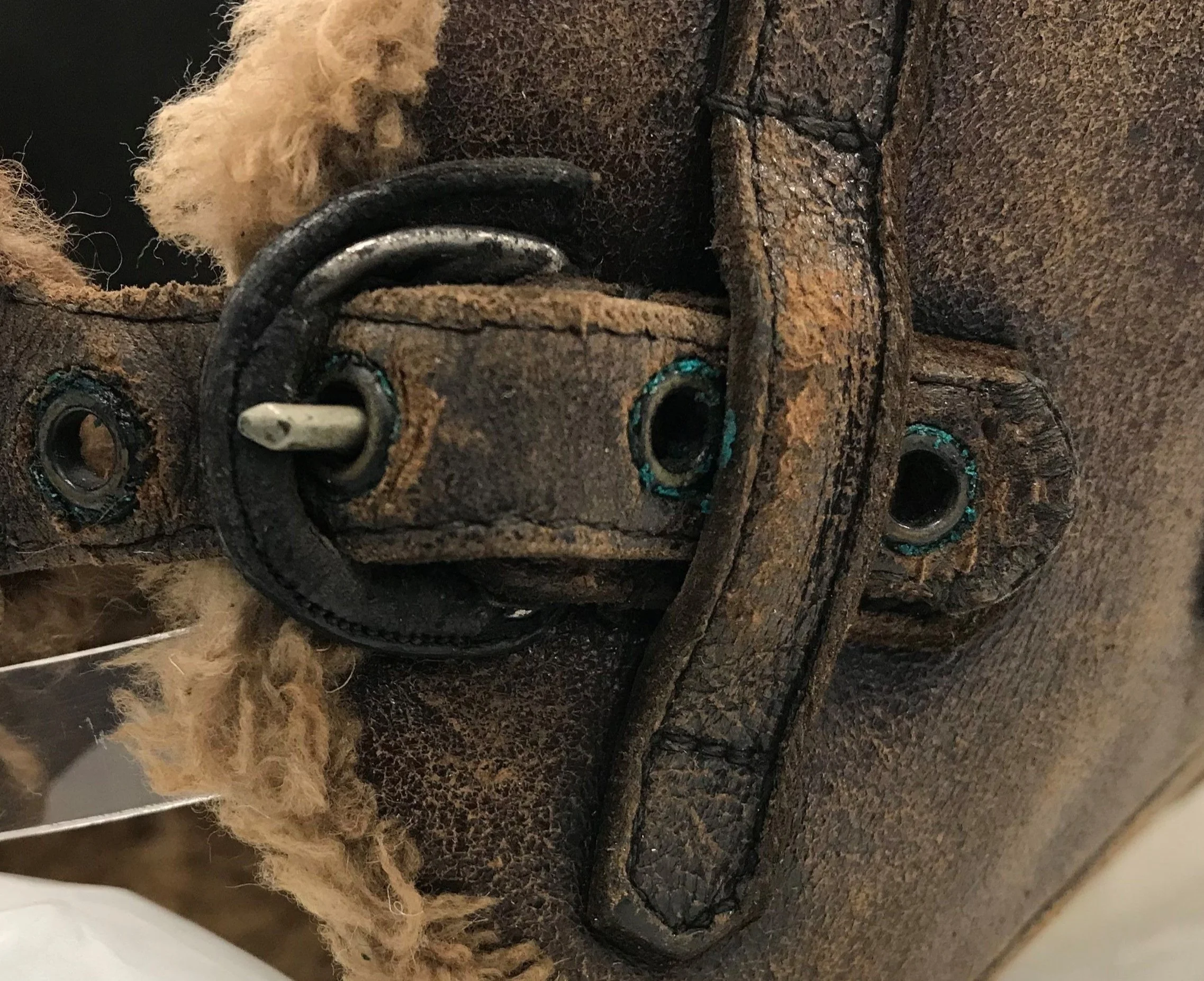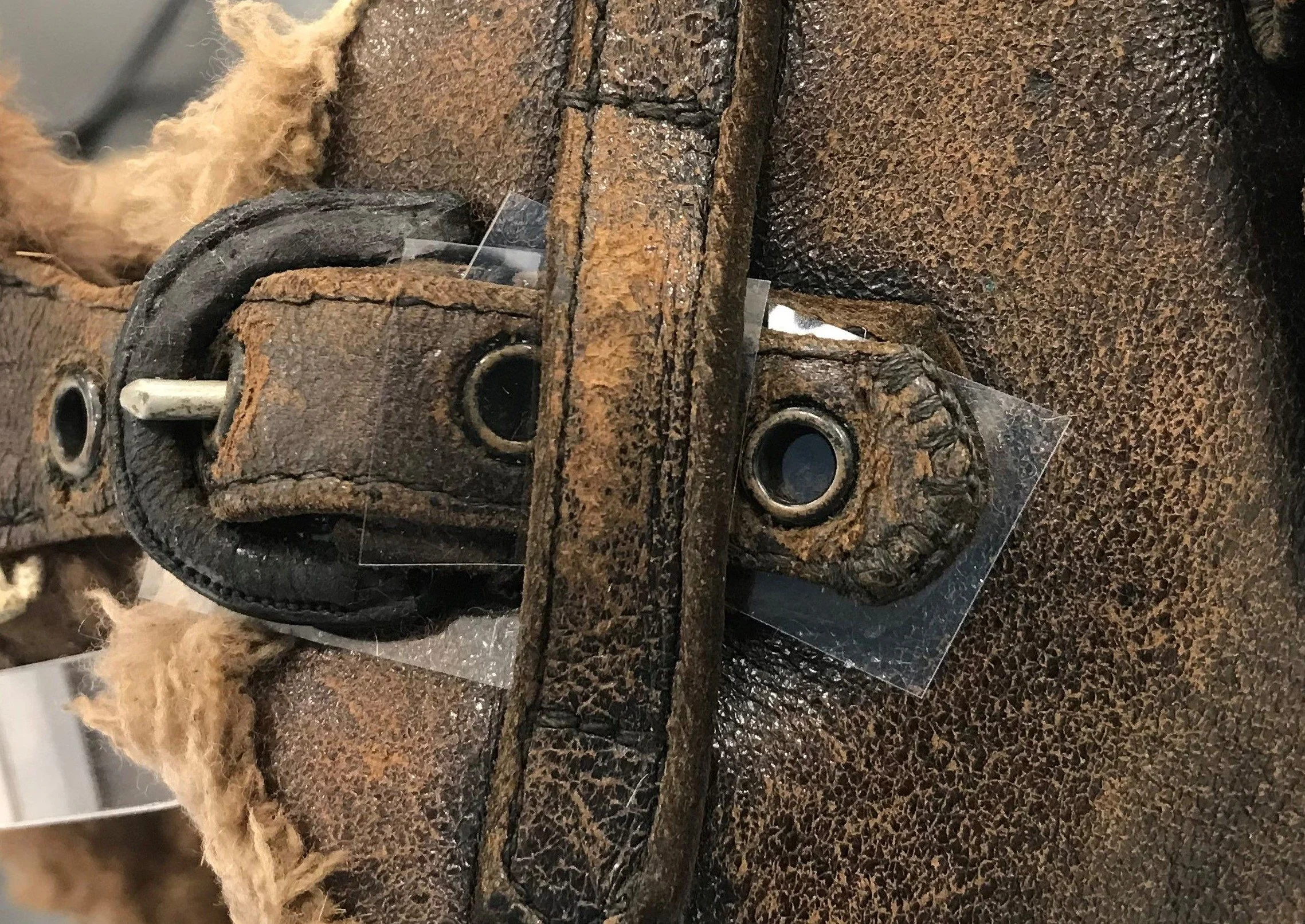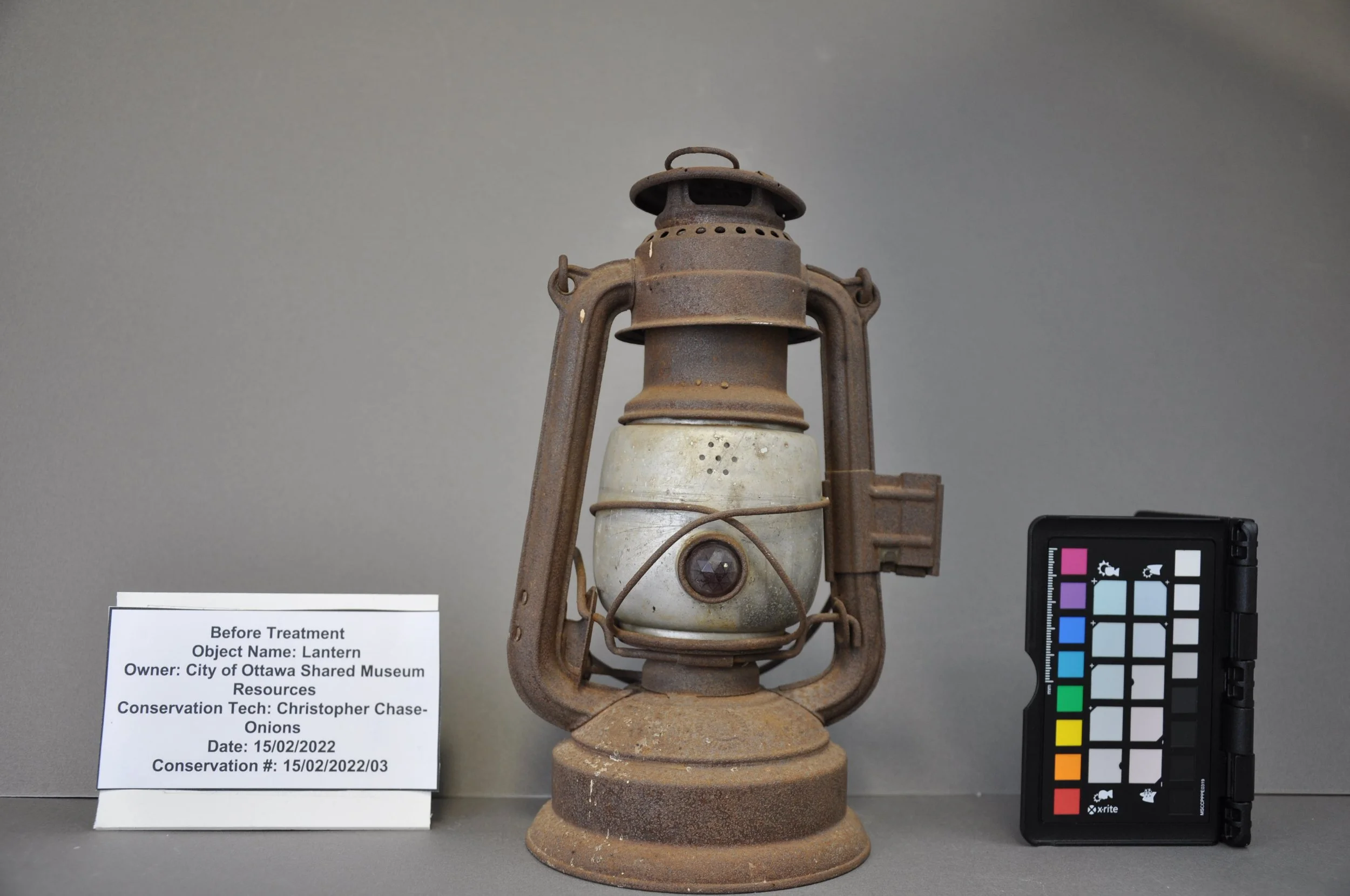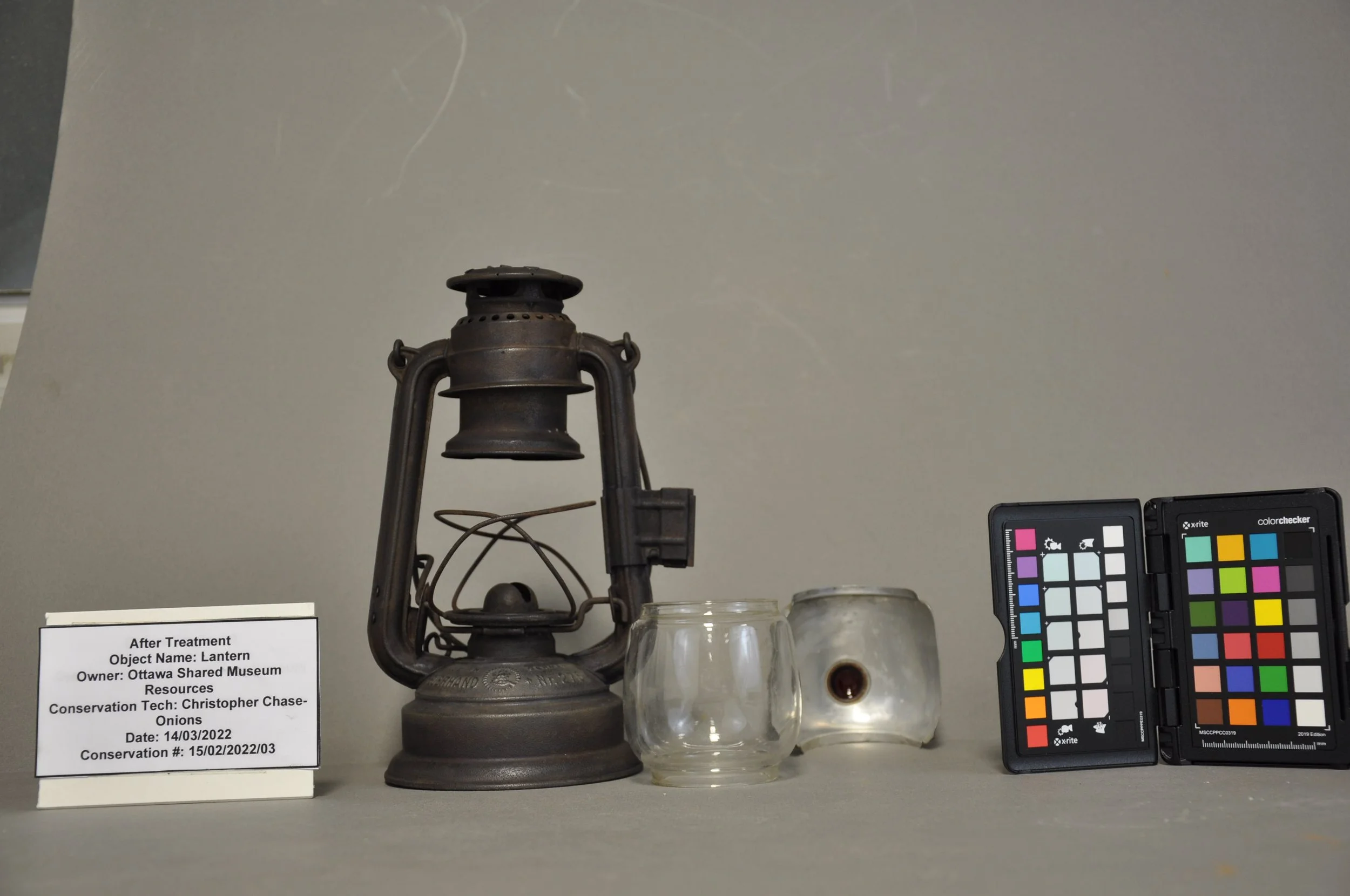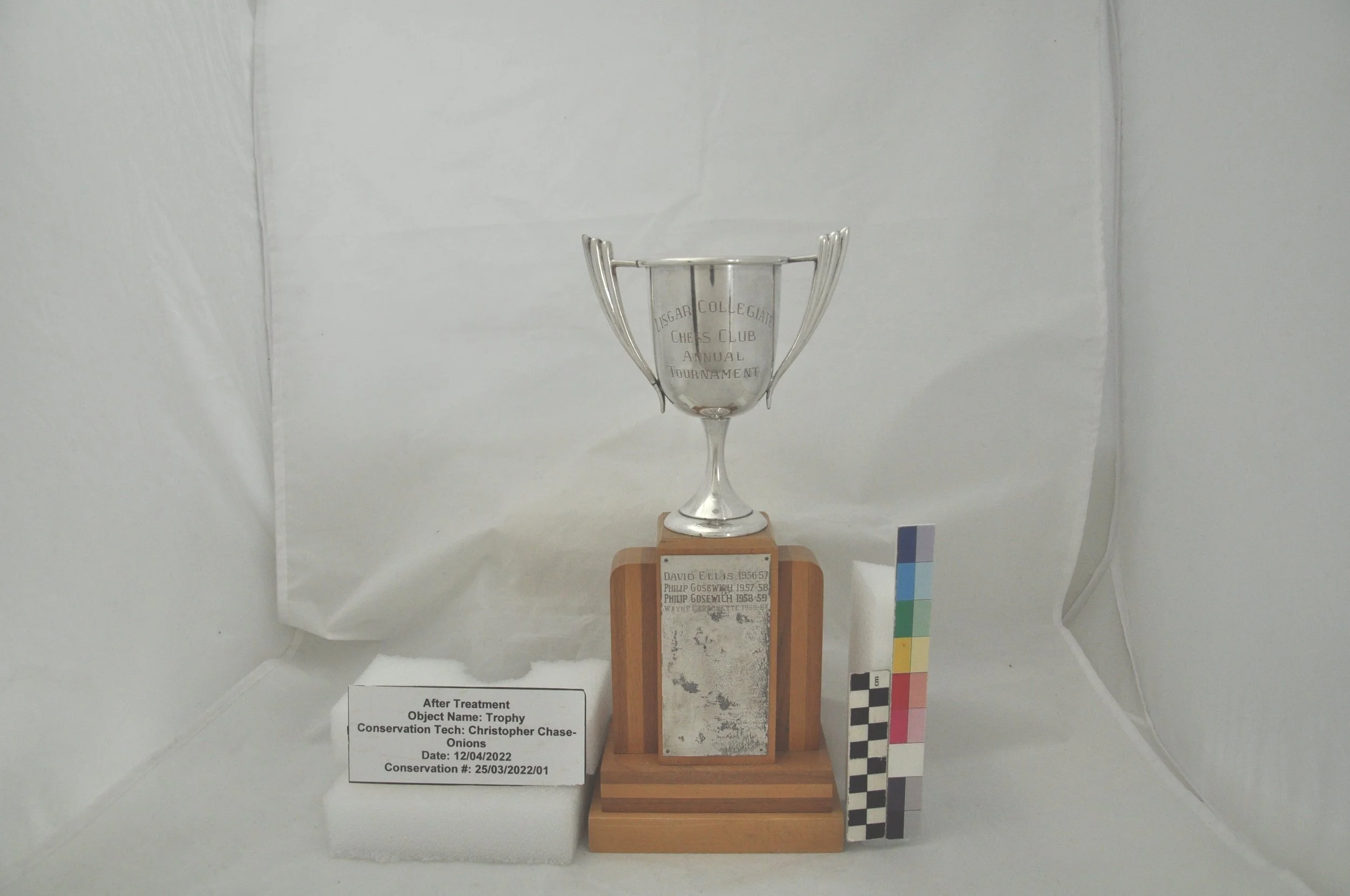Treatment Portfolio
Auger Bit, Date Unknown
Auger Bit, Ingenium Collection.
Material Composition Iron, Wood.
The Auger Bit’s inactive corrosion layer had begun to chip off, and had several spots of active rust on the Bit’s Flute and Handle. Surface dirt was removed using a soft cloth on both the handle and bit, then thewooden handle and the bit were separated. The spots of rust were scrubbed with steel wool, then the residue was cleaned using ethanol applied via wooden skewers. The bit was coated with a 2.5% w/v mixture of tannic acid in Deionized water. A mylar insert was made to prevent staining on the handle from the tannic acid.
Before Treatment
After Treatment
Auger Bit, Date Unknown
Auger Bit, Ingenium Collection.
Material Composition Iron
The Auger Bit’s paint had begun to chip at several spots, along with active rust along the flute and handle and significant encrusted dirt in the threading. The rust was removed using Ethanol applied via wooden skewer, dirt was removed using wooden skewers and a wetted soft cloth, and acetone was used to remove any water or dirt residues. The exposed metal surfaces were coated with microcrystaline wax to provide a barrier and maintain the original visual intention of the artifact.
Before Treatment
After Treatment
Badge, Cycling
Clycling Badge, Ingenium Collection. Treated prior to loan to Windsor Museum
Material Composition Brass
The Badge had multiple small spots of active corrosion across the front surface. The spots were treated using ethanol applied via wooden skewers under microscopic magnification, then coated with microcrystalline wax.
Before Treatment
After Treatment
Flight Helmet
Flight Helmet, Ingenium Collection, treated after coming off of exhibition.
Material Composition Leather, Brass, Unknown Gray Metal
The Brass Eyelets had undergone corrosion from their contact with the leather on the Helmet. As well a previous repair done to the buckle prior to going on exhibit had failed and needed to be redone. The Corrosion product was removed using wooden skewers under microscopic magnification, and was degreased using Stoddard Solvent. An infill was made using layers of heat-activated Beva Tissue with the top layer colour matched using acrylic paint. The layers were applied to ensure at least three points of contact with the broken sections, and Lascaux 360 Adhesive was applied to support the adhesion.
Before Treatment
After Treatment
Lantern, early-mid 20th c. Germany
Fuerhand Nr.276 Kerosene Lantern, c. 1933-1944 Germany. Ottawa Shared Museum Services
Material Composition Iron, Tin, Glass, Plastic. Lantern was also previous treated with a Lead Oxide Primer.
The Lantern had considerable surface dirt buildup, multiple areas of Active Corrosion, as well as dead insects and dirt within the lantern interior. Treatment applied was disassembly of components, apply vigorous mechanical cleaning using gum erasers to remove dirt, empty interior of insect remains and dirt, cleaning glass bowl and tin plate using Acetone, treating areas of Active Corrosion with 10% w/v mixture of Citric Acid and Deionized Water, and coating the surface with a 2.5% w/v mixture of Tannic Acid and Deionized Water to create a barrier against moisture and pollutants.
Before Treatment
After Treatment
Medal, Cycling
Clycling Badge, Ingenium Collection. Treated prior to loan to Windsor Museum
Material Composition Brass
The Badge had multiple small spots of active corrosion across the front surface. The spots were treated using ethanol applied via wooden skewers under microscopic magnification, then coated with microcrystalline wax.
Before Treatment
After Treatment
Model, mid 20th c. Canada
Model of a Theratron Junior, Ingenium Collection
Material Composition: Grey Non-Ferrous Metal (potentially aluminium), Lead, Wood (Oak)
Small lead components had undergone significant corrosion while the artifact was on loan, potentially caused by the coating on the wooden base being damaged and allowing the wood to off-gas while the model was contained in a display case. The model was disassembled, then the base and model were wiped down with a wetted cotton cloth to remove any loose corrosion product. The corroded components were cleaned using ethanol applied via cotton swab to remove the active corrosion, then all exposed areas of metal on the model and components were coated with a 50% w/v mixture of Paraloid B72 in Ethanol. The wooden base was coated with a layer of microcrystaline wax to mitigate the risk of off-gassing, and the model was reassembled.
Before Treatment
After Treatment
Trophy, mid 20th c. Canada
Trophy, Glebe Collegiate Chess Club, c. 1956-1964
Material Composition Silver (plated, copper base), Brass, Wood, Lead (support in Handle)
The Trophy had considerable Tarnish on the Silver and Brass, dust on the Wooden Base, one of the Handles broken off, and residue from a previous improper cleaning (likely Jeweler’s Rouge) that needed to be removed. The surface of the trophy was rinsed using 1% Orvus anionic detergent in Deionized Water to rinse, followed by a manual cleaning using a 1:1 ratio of Fine Calcium Carbonate in Deionized Water. The Calcium Carbonate paste was applied using cotton balls, cotton pads, and cotton tipped applicators, and rinsed using the aforementioned Orvus/Deionized Water solution. The Handle was adhered using a 50% w/v resin of Paraloid B72 in Acetone, with a mount made from clamps and Ethofoam used to maintain stability during adhesion. The Wooden Base was taken apart and rinsed with deionized water, and the Brass Plate was cleaned using the Orvus/Deionized Water solution.
Before Treatment
After Treatment

